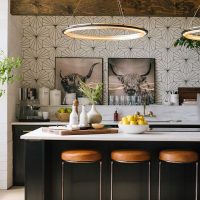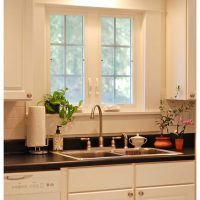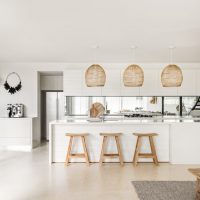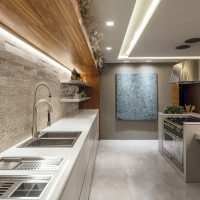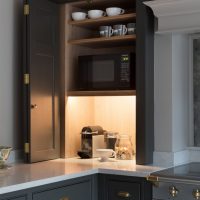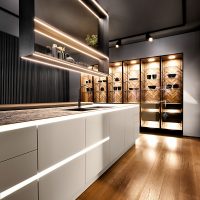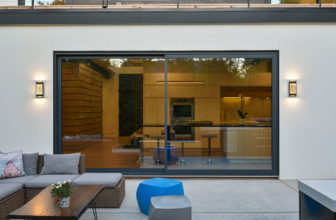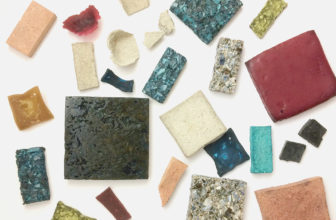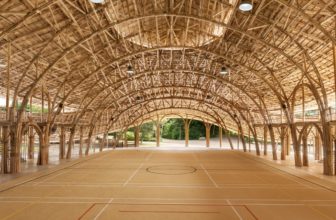Kitchens are very lively spaces where a multitude of processes and tasks take place, this is why you go through each and every detail while choosing your kitchen’s design–but are you giving enough thought to your kitchen lighting design? Lighting does improve spaces and makes us feel more comfortable and drawn to the aesthetics of a room. The right kitchen lighting makes it easier to perform these hard-working tasks!
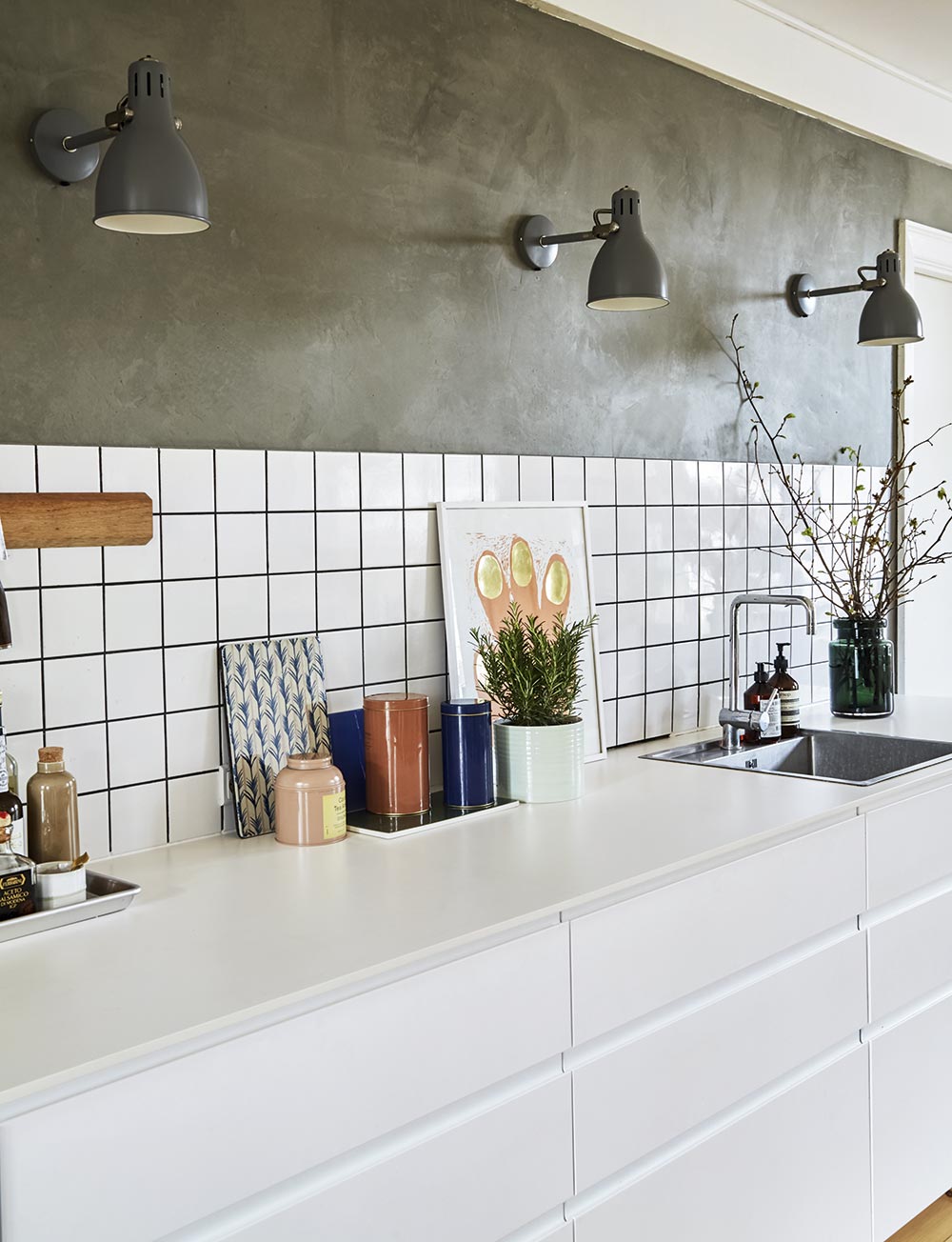
Courtesy of Anitta Behrendt
The different nature and arrangement of kitchen elements require a different arrangement of kitchen lighting as well; the alternating layers of surfaces: countertops, over kitchen islands, and inside and under the cabinets call for layers of lighting correspondingly.
What are the different layers of lighting?
- Ambient lighting: to provide the general lighting of a room.
- Task lighting: to illuminate work surfaces such as countertops or over shelves.
- Accent lighting: to highlight certain axes or elements.
- Decorative lighting: to add a decorative feature or a centerpiece.
There are plenty of design choices for your kitchen lighting, including energy-efficient ones–you can incorporate different LED lights in your kitchen.
What is Trending in Kitchen Lighting?
Regarding kitchen lighting, designers are focusing on lighting each task area separately, hence the lighting fixtures trending in 2021 are:
- Pendant Lights
- Under Cabinet Lights
- Lights Above Cabinets
- Track Lights
- Chandeliers
- Wall Sconces
How to Choose Your Kitchen Lighting?
Now that you understand the concept of lighting layers, here are some tips for choosing your kitchen lighting:
-
Install an ambient lighting fixture
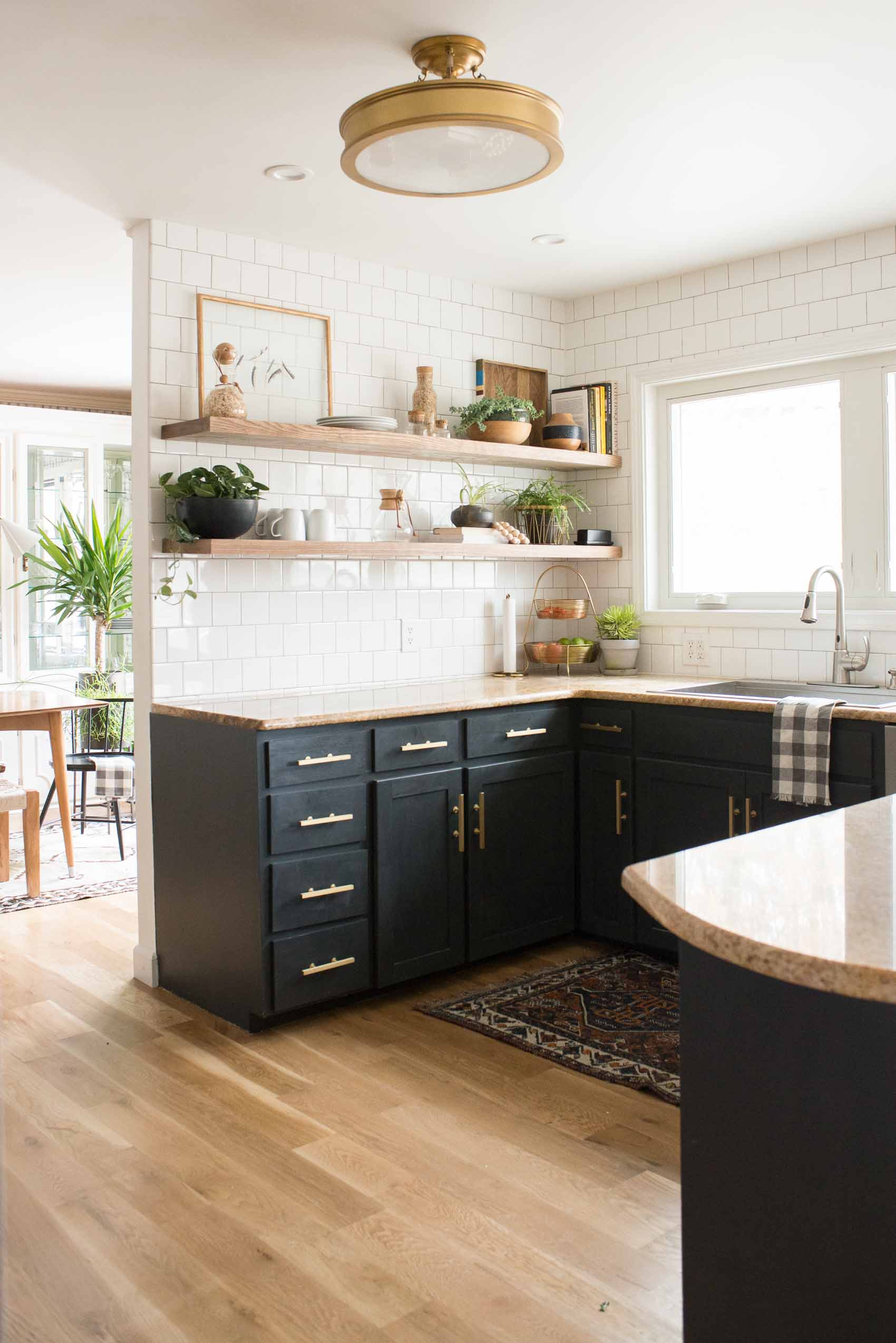
Courtesy of Design Sponge
All kitchens of all sizes need an overhead ambient light–it provides general illumination, softens the shades, and, during the day, supports the daylight that enters the kitchen if it is not enough. Ambient kitchen lighting can be provided through pendants, flush, or semi-flush lighting fixtures. They can be placed in the center of the kitchen or over kitchen islands.
-
Illuminate the work surfaces
These kitchen lighting fixtures will help make your space more functional:
- Over island lighting: a kitchen island is one of the most used surfaces in a kitchen–it is probably where you prepare and serve your meals. Pendants and directional lighting fixtures work best over kitchen islands.
- Above the sink lighting: washing dishes and veggies need extra illumination to ensure everything is clean, especially if the sink is placed under a cabinet. Spotlights work perfectly in this case.
- Above the dining table: if your kitchen has a dining table, adding a chandelier or an elegant pendant over it will accent this space.
- Over countertops lighting: incorporating spotlights or a lighting strip over the counters will illuminate this surface that is probably darkened by the wall cabinets above.
- Courtesy of westelm
- Courtesy of amazon
- Courtesy of style curator
- Courtesy of castelatto
-
Accentuate the cabinets
Cabinets take up most of the kitchen’s space and are probably the first thing that catches the eye, so it is important to consider the kitchen lighting inside and around this element.
- Inside cabinets: if you have open shelves or transparent cabinets to show off your pottery or china, adding a lighting strip inside the cabinets will highlight these even more.
- Cabinets’ outlines: installing a strip light in a groove under the cabinet’s surface will illuminate drawers. Installing a similar one underneath base cabinets will act as a night light and make the space cozier.
- Courtesy of Humphrey Munson
- Courtesy of SieMatic
-
Choose the right material finishes
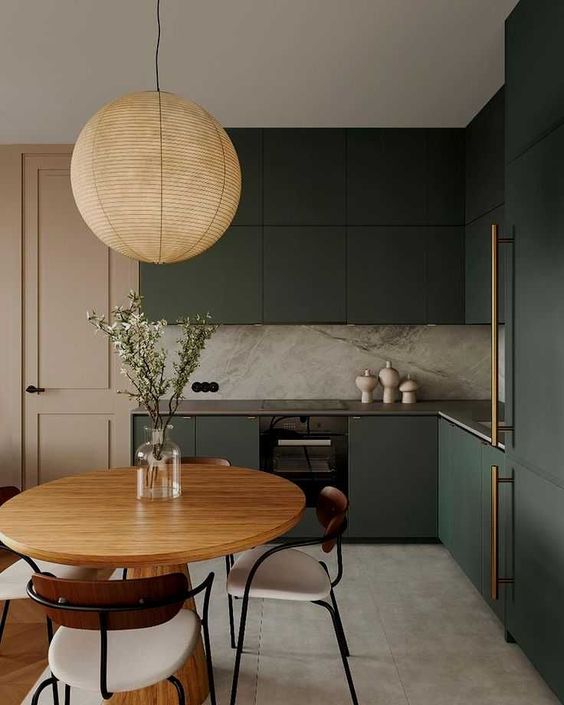
Courtesy of Etsy
Kitchen lighting is not just about function–when you choose the right material finishes you can add to the elegance of your kitchen. Choose materials that fit the overall color palette and textures of the kitchen. It is advised to choose one finish for all lighting fixtures to create unity. Various options of materials are available in the market: glass, fabric, metal, and wood lighting devices.
Glass fixtures, in this case, work best for ambient kitchen lighting, while metal fixtures are a good fit for task lighting that can be directional. Over dining tables or sinks, fabric lighting fixtures will work well with the moisture produced in the air around these areas.
-
Consider the dimensions of your kitchen
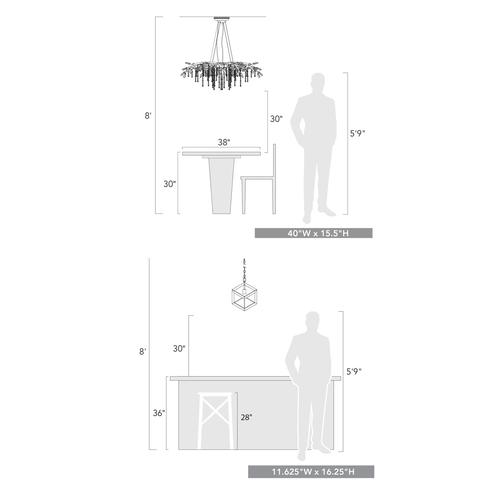
You should measure your kitchen accurately before deciding on the kitchen lighting fixtures. Be extra careful with pendants or chandeliers as hang low from the ceiling and hence grab more attention.
- Leave about 30 inches between the surface and a pendant or a chandelier.
- Allow about 24 inches of horizontal space between pendants. One more tip: an odd number of pendants will create more visual balance.
- Use pendants or chandeliers that are at least 12 inches narrower than a table or a countertop.
-
Choose the right color temperature
Cooler lighting fixtures are better for tasks that need focus, so you might want to choose cool temperature fixtures -3000 to 4000 Kelvin- for ambient and task kitchen lighting. On the other hand, warmer lighting fixtures -2000 to 3000 Kelvin- create a cozy and inviting atmosphere, hence can be used over dining tables.
If your kitchen does not get enough natural light, you can opt for a daylight lighting fixture -5000 Kelvin-. They work best with an overall cool colored decoration and create a visually comfortable environment.
-
Choose energy-efficient fixtures
Choosing an energy-efficient lighting fixture will be a huge money saver and environmentally friendly as well. They can have a higher initial cost but will save money and energy throughout their lifetime.
LED lighting devices use 75% less energy than traditional lighting and they last much longer. You can also choose lighting devices that are certified by energy star–these devices meet the strict energy efficiency guidelines set by the EPA.


